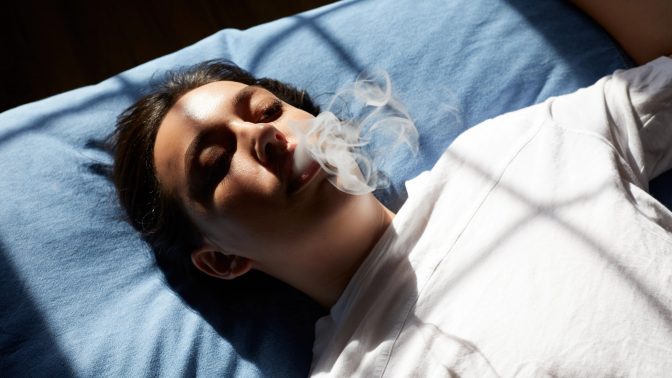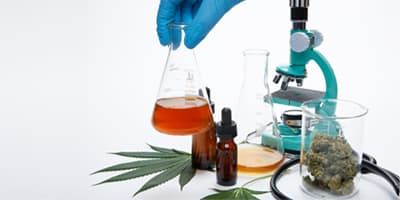Q: Have there been advances in how cannabis can help people who are dealing with the side effects of chemotherapy?
In many ways, the timeline of advances in using cannabis as part of cancer treatment tells the history of the medical marijuana movement.
Back in the 1970s and '80s, physicians had little to offer cancer patients who were suffering the debilitating nausea and vomiting that was a common side effect of new and stronger forms of chemotherapy treatment.
Antidotes to chemo's side effects were desperately needed. Some people who were undergoing chemo began noticing that smoking marijuana eased the nausea.
“When we talk about cancer, there are so many features of the illness that can be treated with cannabis, it's really remarkable,” Dr. Jordan Tishler, a Harvard-trained physician who runs InhaleMD, a Boston-based practice with a cannabis specialty, told Marijuana.com. “The anti-nausea medications we had weren't very effective. What's more, they often caused drowsiness and a weird feeling in your body. In rare but really bad cases, they could even cause an unpleasant loss of unconsciousness and temporary paralysis.”

Cancer patients and their physicians became fierce advocates for medical cannabis, and in 1985 the Food and Drug Administration (FDA) approved Marinol, a synthetic form of THC, to treat nausea and vomiting caused by chemotherapy. It was also approved to treat appetite loss in people with HIV and AIDS. More than two decades later, in 2016, a liquid form of synthetic THC called Cesamet earned FDA approval.
These purified forms of THC, however, lack what's known as the entourage effect, the synergistic benefits that are created by the interaction of the hundreds of compounds in the marijuana plant. For many people, those therapeutic benefits included relief from the depression and anxiety that treatment, or the diagnosis itself, often cause.
There are other shortcomings of synthetic THC, Tishler noted.
“Many patients found those drugs so horribly unpleasant they stopped using them and said they'd rather be nauseated,” he said. “Because Marinol doesn't have the entourage effect, what happens for some people is that they'd get the intoxication really briskly before any of the benefits they were looking for. In short, they'd get blitzed.
“With ordinary marijuana, you'll get some amount of intoxication but the benefits kick in first. You can find a sweet spot where you get anti-nausea relief and the side effect, which is being stoned, is present but not so overwhelming that it tips the balance away from using cannabis.”
Since the '90s, more effective anti-nausea pharmaceutical drugs, including Zofran, have been introduced. But marijuana still has a place in combating chemotherapy-induced nausea. Many patients, Tishler said, will “get the best of both worlds” with some combination of these medications and cannabis.
In recent years, researchers have confirmed that cannabis can help relieve another common side effect of chemotherapy, radiation therapy, or cancer tumors — the sometimes-incapacitating nerve pain known as peripheral neuropathy. Caused by damage to the network of nerves outside the brain and spinal cord that send signals to the limbs, neuropathy may be experienced as a feeling of numbness or extreme pins-and-needles sensations in the hands and feet. Sometimes neuropathy causes a shooting pain or muscle weakness. And these symptoms may persist even years after the cancer itself has been eradicated.
Researchers at the University of California Los Angeles (UCLA) reported in the September 2018 issue of the journal
Neuropharmacology that a form of synthetic cannabis showed promising results in suppressing chemotherapy-induced neuropathy in rats without any effects on the central nervous system — in other words, no buzz.
It may be years before that leads to any approved new medications. For now,
Tishler said that with the right dosing of cannabis, people can enjoy relief from neuropathic pain with a barely perceptible high.
“This is where edibles come in,” he says. “But it's not a matter of take two brownies and call me in the morning. Many people experience nerve pain 24/7. For them, taking a very small amount on cannabis, say a 5 or 10-milligram dose, in a tiny gummy square will help them stay ahead of the pain without any intrusiveness on their ability to function.”
When it comes to using cannabis for relief of nausea or vomiting, Tishler said what people need is rapid onset of relief and a relatively brief duration of effects. The best way to achieve that is through inhalation, ideally with a vaporizer that's able to maintain the temperature of about 350 degrees.
Anxiety and depression can be managed with a very different regimen, Tishler said.
“Unlike nausea and depression, which needs to be treated when it comes up, anxiety and depression do not require using cannabis during the daytime,” he said. “You can consume a small dose around bedtime, on a once-a-night basis, and that's really good for treating depression and anxiety for a 24-hour period, even though the intoxication has worn off overnight.”
Patients battling cancer will want to talk to their medical team about how cannabis may interact with their treatment. These types of conversations are taking place more and more.
A recent study shows that 80 percent of oncologists have discussed medical marijuana with their patients. Nearly two-thirds believe it can be an effective addition to standard pain treatment and equally or more effective than traditional therapies for symptoms including nausea or lack of appetite.
But most of these oncologists also say they need more information to feel well-informed about making marijuana recommendations. Tishler wants to help fill that gap.
He recently founded the Association of Cannabis Specialists with the mission of providing evidence and experience-based education to patients, clinicians and lawmakers on cannabis medicine.




